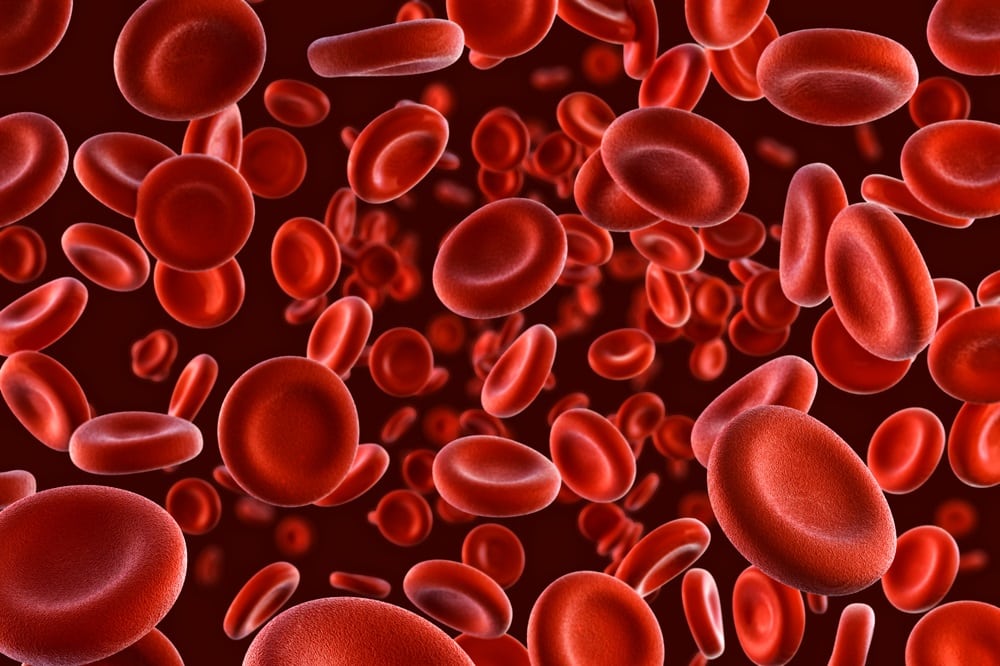Bioverativ Therapeutics Inc [2023] APO 64
Date:
Venue:
Delegate:
14 December 2023
Australian Patent Office
Felix White
Highlight
In this unappealed Patent Office decision, an application for an extension of time to file a divisional application of a pharmaceutical formulation patent was rejected, resulting in a lost opportunity to apply for a patent term extension (PTE). The applicant’s misunderstanding of Australian law relating to PTEs was insufficient to enliven the Commissioner’s’ discretion to grant an extension of time.
Background
Bioverativ Therapeutics Inc is the owner of Australian patent no. 2019208273 (Patent) which describes compositions and methods for treating haemostatic disorders. In particular, the claims of the Patent encompass two separate dosage forms of eftrenonacog alfa (marketed under the trade mark ALPROLIX®) which is used to treat haemophilia B. The 3000 IU (International Units) formulation was listed on the Australian Register of Therapeutic Goods (ARTG) on 1 May 2014, and the 4000 IU formulation on 16 January 2020. Acceptance of the Patent was advertised on 30 September 2021. Pursuant to reg 6A.1 of the Patents Regulations 1991 (Cth), the deadline to file any divisional application of the Patent was 30 December 2021, three months after advertisement.
An application for PTE must be based on the first approved product that falls within the scope of the claims of a granted patent (in addition to other criteria). As both the 3000 IU and 4000 IU products fall within the scope of the claims of the Patent an extension based on the earlier listed 3000 IU formulation would amount to ZERO days. However, Bioverativ became aware that a divisional application with claims specific for the 4000 IU formulation would be eligible for PTE of 1 year and 10 months, based the later ARTG listing date of that product (16 January 2020).
This decision concerns Bioverativ’s application for a nine month extension of time to claim divisional status from the Patent for its further patent application no. 2022228110 (110 Application) filed on 6 September 2022, specific to the 4000 IU formulation. Bioverativ’s application for an extension of time was ultimately denied.
Key Issues
Extensions of patent term (PTE)
Patents that cover certain pharmaceutical inventions are eligible for a PTE of up to five years. The duration of a PTE is calculated in accordance with s77 of the Patents Act 1990 (Cth) (Act). Specifically, the duration of the PTE is the time elapsed between the date of patent filing, and the earliest regulatory approval date of any pharmaceutical substance per se falling within the patent claims, less five years. An application for a PTE must be filed within six months after the later of the date the patent is granted and the first ARTG listing date of any such substance.
Although the eligibility of formulation patents for PTE is an area of law that is ripe for judicial determination, it is the current routine practice of the patent office to grant PTE on pharmaceutical formulation patents.
Extensions of time (EOT)
Section 223(2) of the Act grants the Commissioner of Patents discretion to grant an extension of time to pay a renewal fee where the failure to pay is due to either (a) an error or omission by the person concerned, or by his or her agent or attorney; or (b) circumstances beyond the control of the person concerned.
Bioverativ filed evidence from a US patent attorney responsible for worldwide management of its patent portfolio that, at the time of acceptance, he understood the Patent would be eligible for a PTE based on the 4000IU ARTG listing. Spruson & Ferguson, Bioverativ’s Australian patent agents, subsequently reported the grant of the Patent to the US attorney, following which he requested information on the procedures for seeking a PTE. Spruson & Ferguson subsequently advised the US attorney that a PTE application based on ALPROLIX® would likely be rejected because of the 2014 ARTG listing date for the 3000IU formulation, but that a patent specific to the 4000IU could be entitled to a PTE. However, by the time of grant, the deadline to claim divisional status from the Patent had passed. The Delegate noted that there was no suggestion in the evidence that there was any error in the timing of that correspondence from Spruson & Ferguson.
The decision of the Delegate turned on whether an error had occurred which enlivened the Commissioner’s discretion under s223(2). The Delegate summarised a number of other statutory criteria which must be satisfied, including that the execution of the act must have been frustrated by the circumstances set out in either s223(2) (a) or (b) (summarised above), i.e. there must have been a causative error, omission, or circumstance beyond control.
Bioverativ also filed evidence from its US attorney that (i) Bioverativ’s position was to obtain all possible patent extensions of term when available, and (ii) it was only after the post-grant correspondence that the US attorney realised his earlier understanding that the Patent would be eligible for a PTE was incorrect. The US attorney promptly instructed the Australian agents to file the 110 Application, which was filed on 6 September 2022, together with an application for a nine month extension to claim divisional status from the Patent.
The Delegate made it clear that an eligible error requires an established fact or intended course of action. In this case, the relevant act for which the EOT was sought was the filing of a divisional application, while Bioverativ’s evidenced intention was to obtain a PTE. As such the Delegate distinguished the present case from earlier cases where an EOT had been granted, because in those cases there was an evidenced strategic intention to carry out the same type of act for which the EOT was sought:
- Kimberly-Clarke1 and Apotex2 concerned EOTs for filing a notice of opposition, in circumstances where the notice of acceptance, which triggered the relevant deadline, was either unreported or missed; and
- Lundbeck3 concerned an application for an EOT to file a PTE for the pharmaceutical substance (+)escitalopram, in circumstances where the applicant misunderstood which was the relevant ARTG listing.
Although there was some correlation between the facts of both Kimberley-Clarke and Lundbeck and the present case in that no intention to carry out the specific relevant act was formed before the relevant date, the Delegate found that in those cases there was an obvious error which precluded the possibility of forming the intention to carry out the relevant act, in circumstances where the applicant had an overarching intention to carry out that act. By contrast, since Bioverativ’s overarching strategic objective was to obtain PTEs where available, the filing of a divisional application was a change of strategy made with the benefit of hindsight, in particular because the US attorney did not receive advice that a divisional application could give rise to PTE eligibility until after the relevant deadline had passed. Importantly, the Delegate pointed out that s223(2) is not a general power of extension, such that any misunderstanding of the law will qualify for an EOT.
Outcome
The Delegate refused the application for an EOT as the evidence did not establish that the erroneous understanding of Australian patent law was a causative error, but for which a timely divisional application would have been filed.
Implications
PTEs have been the subject of a number of disputes in recent years, including those reported in our 2022 Patent Case summary specifically as to the correct ARTG listing giving rise to PTE eligibility: Bayer Pharma Aktiengesellschaft [2022] APO 7, Merck Sharp & Dohme & Anor v Sandoz Pty Ltd [2022] FCAFC 40 and Commissioner of Patents v Ono Pharmaceutical Co. Ltd & Anor [2022] FCAFC 39.
This decision confirms that an applicant’s misunderstanding of the law may not entitle it to an EOT to correct resulting strategic errors. Both applicants and their advisors must be alive to the complexities of PTEs well before a patent is accepted to avoid such mistakes in future.
____
[1] Kimberly-Clark Ltd v. Commissioner and Minnesota Mining and Manufacturing Co (No 3) [1988] FCA 421; 13 IPR 569)
[2] Apotex Pty Limited and Commissioner of Patents and Les Laboratoires Servier (Party Joined) [2008] AATA 226
[3] Aspen Pharma Pty Ltd and Others and Commissioner of Patents and H Lundbeck A/S [2012] AATA 851 and its appeal Aspen Pharma Pty Ltd v H Lundbeck A/S [2013] FCAFC 129
About Pearce IP
Pearce IP is a boutique firm offering intellectual property specialist lawyers, patent attorneys and trade mark attorneys to the life sciences industries (in particular, pharmaceutical, biopharmaceutical, biotech, ag-tech and food tech). Pearce IP is the 2021 ‘Intellectual Property Team of the Year’ (Lawyers Weekly Australian Law Awards) and was shortlisted for the same award in 2022. Pearce IP is ranked in IAM Patent 1000 and Managing IP (MIP) IP Stars, in Australasian Lawyer 5 Star Awards as a ‘5 Star’ firm, and the Legal 500 APAC Guide for Intellectual Property.
Our leaders have been recognised in virtually every notable IP listing for their legal, patent and trade mark excellence including: IAM Patent 1000, IAM Strategy 300, MIP IP Stars, Doyles Guide, WIPR Leaders, 5 Star IP Lawyers, Best Lawyers, and Australasian Lawyer 5 Star Awards, and have been honoured with many awards including Australian Law Awards – IP Partner of the Year, Women in Law Awards – Partner of the Year, Women in Business Law Awards – Patent Lawyer of the Year (Asia Pacific), Most Influential Lawyers (Changemaker), among other awards.

Naomi Pearce
CEO, Executive Lawyer (AU, NZ), Patent & Trade Mark Attorney (AU, NZ)
Naomi is the founder of Pearce IP, and is one of Australia’s leading IP practitioners. Naomi is a market leading, strategic, commercially astute, patent lawyer, patent attorney and trade mark attorney, with over 25 years’ experience, and a background in molecular biology/biochemistry. Ranked in virtually every notable legal directory, highly regarded by peers and clients, with a background in molecular biology, Naomi is renown for her successful and elegant IP/legal strategies.
Among other awards, Naomi is ranked in Chambers, IAM Patent 1000, IAM Strategy 300, is a MIP “Patent Star”, and is recognised as a WIPR Leader for patents and trade marks. Naomi is the 2023 Lawyers Weekly “IP Partner of the Year”, the 2022 Lexology client choice award recipient for Life Sciences, the 2022 Asia Pacific Women in Business Law “Patent Lawyer of the Year” and the 2021 Lawyers Weekly Women in Law SME “Partner of the Year”. Naomi is the founder of Pearce IP, which commenced in 2017 and won 2021 “IP Team of the Year” at the Australian Law Awards.

Kate Legge
Special Counsel, Lawyer
Kate is an experienced IP and patent lawyer, providing IP leadership for pharmaceutical product development and commercialisation in global markets – from initial scoping through to post-launch.
She has developed and implemented global IP strategies over more than 15 years at multi-national pharmaceutical companies. She is an Australian qualified and registered legal practitioner, and has a Master’s degree in IP Law and a BSc in biochemistry.

